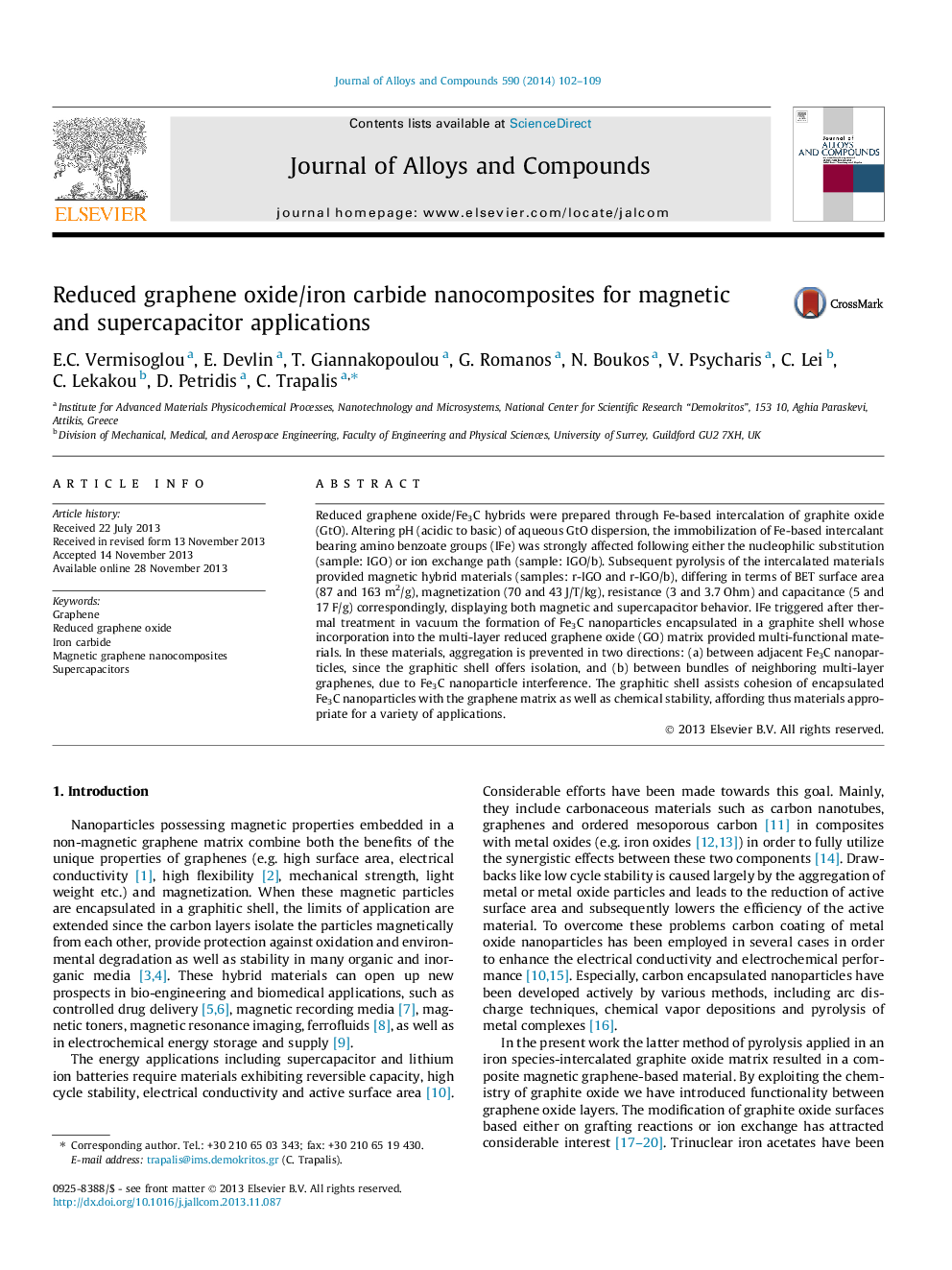| Article ID | Journal | Published Year | Pages | File Type |
|---|---|---|---|---|
| 1611596 | Journal of Alloys and Compounds | 2014 | 8 Pages |
•Pillaring of graphite oxide with iron trinuclear-like complex has been achieved.•Fe3C pillared few layer graphenes are produced after thermal annealing in vacuum.•Fe3C particles are encapsulated in a graphite cage protected from agglomeration.•The graphene oxide/Fe3C composites exhibit magnetic and supercapacitor properties.
Reduced graphene oxide/Fe3C hybrids were prepared through Fe-based intercalation of graphite oxide (GtO). Altering pH (acidic to basic) of aqueous GtO dispersion, the immobilization of Fe-based intercalant bearing amino benzoate groups (IFe) was strongly affected following either the nucleophilic substitution (sample: IGO) or ion exchange path (sample: IGO/b). Subsequent pyrolysis of the intercalated materials provided magnetic hybrid materials (samples: r-IGO and r-IGO/b), differing in terms of BET surface area (87 and 163 m2/g), magnetization (70 and 43 J/T/kg), resistance (3 and 3.7 Ohm) and capacitance (5 and 17 F/g) correspondingly, displaying both magnetic and supercapacitor behavior. IFe triggered after thermal treatment in vacuum the formation of Fe3C nanoparticles encapsulated in a graphite shell whose incorporation into the multi-layer reduced graphene oxide (GO) matrix provided multi-functional materials. In these materials, aggregation is prevented in two directions: (a) between adjacent Fe3C nanoparticles, since the graphitic shell offers isolation, and (b) between bundles of neighboring multi-layer graphenes, due to Fe3C nanoparticle interference. The graphitic shell assists cohesion of encapsulated Fe3C nanoparticles with the graphene matrix as well as chemical stability, affording thus materials appropriate for a variety of applications.
Graphical abstractFigure optionsDownload full-size imageDownload as PowerPoint slide
